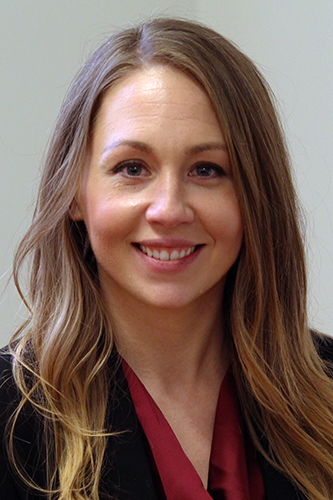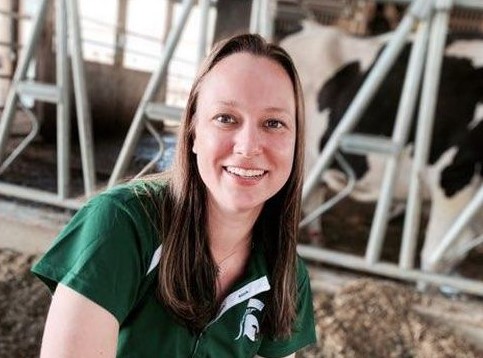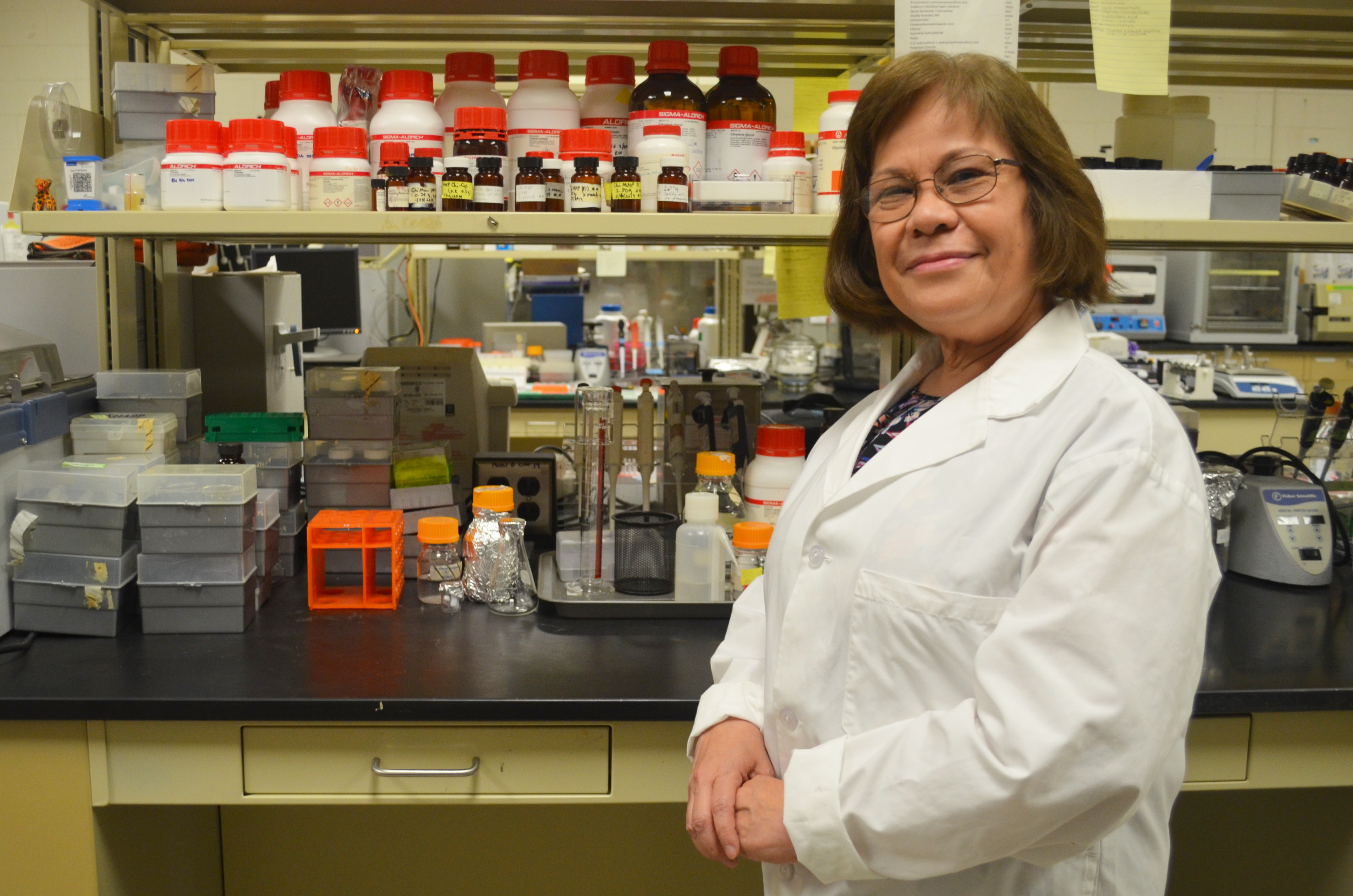Faculty develop new approaches to teaching, research during pandemic
Faculty members in the College of Agriculture and Natural Resources are developing new ways of engaging with students and conducting research amidst the novel coronavirus pandemic.

The novel coronavirus pandemic brought all “nonessential operations” on the Michigan State University campus to halt in March 2020. Since then, the university has begun slowly and cautiously reopening parts of campus with new guidelines and restrictions.
With safety as the top priority, faculty members from the College of Agriculture and Natural Resources have had to adapt and discover new methods of teaching and conducting research.
“Online is not our preferred mode of teaching most of our courses, but no matter what modality – we offer a very good education,” said Ron Hendrick, dean of CANR. “It’s sad not to have kids on campus. The lack of students; the lack of people; no events at the MSU Pavilion; pausing operations of the MSU Dairy Store; it’s all takes a toll, without question.”
Despite the setbacks, Hendrick said he remains impressed with the faculty’s ability to quickly switch gears when it was announced that undergraduate learning would move online this fall semester, two weeks before classes started.
“The timing definitely caused some difficulty, but they were prepared for this likelihood,” he said. “I applaud their efforts.”
Researching the impact of remote education
Aaron McKim, assistant professor in the Department of Community Sustainability (CSUS), trains future teachers as part of the Agriculture, Food and Natural Resources Education (AFNRE) program.
He said the pandemic has obviously made it difficult for students to have in-person teaching experiences, at local schools as well as universities. The lack of interaction that comes with in-person classroom instruction is a major loss for students of all ages.
Teaming up with Tyson Sorenson, assistant professor of agricultural education at Utah State University, McKim conducted a nationwide survey of high school agriculture teachers examining how the pandemic has impacted education. The survey found that while teachers adapted well to remote learning, their job satisfaction decreased by 23%.
“High school teachers, much like post-secondary faculty, are problem solvers,” McKim said. “They started finding new tools and ways to engage in really cool activities for their students, but our research indicates that they missed certain aspects of their job that can’t be replicated in virtual instruction.”
McKim has implemented new strategies, learning experiences and tools during the pandemic, including virtual panels and even a podcast with fellow MSU agricultural education professors Buddy McKendree and Mark Forbush.
“We've never had a chance to do a whole panel of student teachers because of the timing and logistics,” McKim said. “We also did a similar panel with Michigan teachers of various experience levels, which is, again, something we never had the opportunity to do, but were able to because of the impact of the pandemic.”

Jacquelyn Jacobs, assistant professor in the MSU Department of Animal Science, integrated virtual field trips into her large companion animal biology course in 2019, months before the pandemic hit. These videos, shot at Preuss Pets and Potter Park Zoo, both in Lansing, Mich., show how to best care, manage and maintain the welfare of domestic pets.
“I had thought about trying to incorporate ways for students in larger classes to visit places virtually,” she said. “Large classes often struggle with issues of transportation and ensuring all students have the opportunity to have similar experiences at the facility, but it’s unknown if a virtual visit would have the same effect on student learning and engagement.
“At the time, I didn't know that that research was going to be so forward-thinking; the concept was born prior to COVID-19's influence. Now, the research may be applicable to classes of all sizes.”
Jacobs is also brainstorming ways to collect data on the impact of the novel coronavirus with animal science colleagues Tasia Taxis, Dan Buskirk and Karen Waite.
“Along with a few other faculty, we conducted surveys in our department on the response of students to our teaching in the spring. That was really more internal information for our teaching faculty,” she said. “Now, we're trying to be more thoughtful about ways to move forward since we know the students struggled with engagement and time management.”
McKim said research on how the coronavirus pandemic has changed teaching and education will have lasting value.
“This research can contribute to the growth of our college and the growth of the university,” he said. “What I have seen from CANR leadership is the willingness to embrace the idea that this is something that's going to make us better because we're going to grow together through it.”
Adjusting quickly to remote learning
When MSU quickly moved to remote learning in March to respond to the novel coronavirus outbreak, Taxis and Cholani Weebadde wasted little time ensuring their students had the tools they needed to learn from home.
Weebadde said that during spring break, she had a training with her Center for Integrative Studies in General Science team about going to remote teaching “in case” the novel coronavirus hit Michigan and cause the university to shut down. When students returned after break, she offered them some incentive to prepare for what was likely ahead.

“I gave them an extra-credit assignment to download Zoom and prepared them for what we were going to do if we had to go into remote teaching, say, if I got sick,” said Weebadde, who taught Plant Breeding and Biotechnology, and Applied Environmental and Organismal Biology in spring 2020. “So, the next day at noon, when MSU went on lock down, my students were ready for their next class and we already had everyone on Zoom and the transition was unbelievable.”
Taxis also had the benefit of speaking with her class in person prior to the switch to remote learning. She emphasized communication as the key factor to successful online learning.
“It saved my tail having that last meeting where I could talk to the students,” said Taxis, who teaches Genetic Improvement of Domestic Animals. “Having that interaction with the students the day we went remote, to make sure they were comfortable moving forward, helped because I got feedback and was able to adjust my teaching based on that conversation.”
Taxis placed an emphasis on keeping the lines of communication open throughout the spring and summer semesters. She hosted meeting times with students on Zoom and had social hours for undergraduate and graduate students to join and talk with her and other Department of Animal Science colleagues about their work and studies.
“As soon as we went remote, I knew keeping them self-motivated was going to be hard,” Taxis said. “I really care about my students and want them to be successful, but I also want them to learn the material and be excited about it. I did the best I could to host social hours to try to stay connected.”
Those connections are especially important for freshmen, who are looking to build relationships that will maintain them throughout their college experience.
Weebadde said being flexible and understanding was the key to a smooth transition for herself and her students. She said the support she received from MSU to help set her up for online teaching success is what allowed her to place the focus squarely on her students. MSU provided a series of best practices and Desire2Learn training opportunities for teachers to prepare for online course planning and implementation.
“I’m really thankful for the steps MSU took to get us prepared so quickly,” she said. “I just can’t imagine what this would have been like without MSU taking steps to quickly offer training programs for faculty.
“The MSU IT folks have been really great, especially Susan Halick who patiently walked me through how to improve the look and feel of online classes. MSU Hub also played a critical role in getting faculty to evaluate each other’s courses I Summer. My hat’s off to those folks who work day and night to give that training to all of us who are starting with baby steps with online teaching.”

Both Taxis and Weebadde are adjusting their courses to further engage students in the upcoming semesters with improved online learning techniques.
“One thing that would be really interesting, and the idea came to me during the past semester when I hosted the social hour, was that I can have anybody in the world come on Zoom and speak to my students,” Taxis said. “I can have nutritionists from New Zealand come and talk about that topic from their perspective. I look forward to that because I think it creates a different depth that you wouldn’t necessarily get if you were in a classroom.”
Along with handling multiple courses, Taxis and Weebadde both have ongoing research that was affected in various ways by the novel coronavirus.
Taxis received a grant to further MSU’s bovine leukemia virus (BLV) research. She will be examining calf exposure to BLV and the effects that can have on the cows as adults.
Weebadde is conducting strawberry evaluations. As social distancing restrictions on MSU farms and greenhouses required her and her undergraduate research assistant to visit the farm less frequently over the summer, Weebadde got creative.
“Because I couldn’t go to the lab or the field with my student, we established small labs at our homes,” she said. “Whatever I needed, I bought two of everything we would need, so she had her little station in her kitchen and I had my little station in my kitchen.”
Weebadde also advises international graduate students. Her PhD students in Ghana and Sri Lanka were all able to continue their field research in their home countries and report back to her as needed.
Stepping up laboratory safety

Prior to the novel coronavirus disrupting on-campus activities in spring 2020, Evangelyn Alocilja was working on a rapid detection test for the virus.
The professor in the MSU Department of Biosystems and Agricultural Engineering is one of the world’s foremost experts on biosensor technology development for affordable point-of-care detection of infectious diseases. She has pioneered nanotechnology-based tests that detect tuberculosis in roughly 20 minutes and is striving to do the same for the novel coronavirus.
Since returning to her lab in Farrall Hall, she has evaluated her new genomic biosensor in a surrogate (non-clinical) virus setting. The next step is to have medical doctor collaborators in Mexico and Peru validate her findings. These partners have institutional review board approval to use deidentified discarded novel coronavirus test samples from patients.
“We want to lower the cost of disease detection while also speeding up the process,” Alocilja said. “Right now, the widely used coronavirus tests are still taking several hours, days or even longer for results to come back, and they are expensive in some areas. If it takes several days, the results are almost useless. We don’t have that kind of time in the fight against this disease.”
Before she could resume her research, however, she needed to establish new protocols for her team in the lab. Each day, individuals must complete a health screening form before coming to campus. Once that’s approved, each person registers at Farrall Hall to track who enters the building, and proper contact tracing can occur if an employee tests positive. Finally, team members are asked to sign into the lab itself, as only four people can be present at a time.
Inside the lab, social distancing of at least six feet is mandatory. Similar to many stores and businesses, one-way paths are clearly marked to avoid unnecessary interactions. Surfaces are cleaned multiple times throughout the day, and equipment is sanitized after each use. A signup sheet governs the occupancy of small rooms attached to the lab that contain microscopes and other instruments.
Alocilja has questions on how she will mentor students in the lab while practicing social distancing. She said it’s particularly challenging with first-year lab assistants, for example, because demonstrating how to use instruments and observing students can be easier while looking over a shoulder.
“It’s been a long process to get back to research,” Alocilja said. “But safety is the top priority, and we’ve gotten used to the new procedures fairly quickly.”



 Print
Print Email
Email





